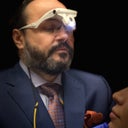Hi there, Happy New Year. You ask an excellent question. Bear with me here, and I'll try and give you a holistic picture so that you have a full understanding of your question and the answer. The answer is at the bottom! There are five elements to a TT that we as surgeons consider when examining you. Our aim, of course, is to take the shape that bothers you enough to seek advice from someone like me, and surgically alter it to become the very best shape you can be.If there are non surgical methods we can see that will improve your shape, then we should not operate on you, but instead advise you. That's our job:The causes of dissatisfaction with the shape of our trunks, or tummies, relates to a number of factors.- our inherited shape (short or long tummy, hip width, general skeletal shape and body type) Bottom line: This is not changeable.- our inherited skin elasticity and tendency to stretch marks (our skins ability to bounce back after an episode of stretching such as pregnancies or weight gain). If elasticity is poor - or the skin has been extremely stretched by either obesity or pregnancies or both - then a permanent excess of skin will result. It's distribution - loose overhang, loose upper tummy, love handles, creases and folds - depends upon the individual way the skin attaches to the abdominal muscular wall in that individual. Bottom line: Exercise won't tighten loose skin. Surgical removal of skin excess is the only effective method of firming loose skin, and the key element of a TT.- our inherited tendency to accumulate fat inside our abdomen around our organs - this fat cannot be removed by surgery. (fat between the skin and muscle wall is accessible to removal by plastic surgery - fat under the muscle wall is not. Men and post menopausal women tend to accumulate intra abdominal, non accessible fat. Women before menopause, when they are fertile, are hormonally protected from intraabdominal fat accumulation - they accumulate fat external to the muscle wall preferentially in order to keep room for an expanding pregnant uterus. So, a fertile overweight female most likely has a thin body inside the thick covering of skin and fat. An overweight post menopausal female will usually have accessible fat under the skin, and an accumulation of non accessible fat under the skin around the organs. This is why women, having lost hormonal protection after menopause, often become frustrated by a thickening of their waist. Unfortunately this is usually not fully correctable. An overweight male will have mostly non accessible fat under the muscle and around the organs. surgery can't remove this fat, only weight loss can.) Bottom line: A TT is not a treatment for obesity. If you're overweight, lose weight before the surgery and learn to keep it off. This is diet not exercise. A diet is not "going on a diet". It is a CHANGE of diet and lifestyle. As a surgeon, I do not want you to be thin. I want you to be happy. So, the right time for a TT is when you are HAPPY at your weight, and can SUSTAIN it for the long term. Then you're ready, I can surgically smooth out irregularities that remain and that's a big step to a good outcome.- The distribution of our external fat stores. Ideally, for the best possible shape, the muscular body shape should be good. And the skin should be evenly draped over the underlying muscular shape, without lumps or irregularities such as a pot belly or love handles. A key part of a good TT is, as the surgeon, to actively design the procedure to ensure release of attachments that create skin deformity, and to thin out thicker fatty areas Smooth, flowing body curves from a narrow as possible waist to flared hips are essential to a good result in women, and a thin fat layer showing as much definition as possible in men (men are lumpy!). This is achieved by intra operative liposuction or fat excision.Bottom line: Too much fat is corrected by weight loss. Evening out irregular fat deposits can only be done surgically, and is a key element of TT.- Finally: the muscle wall. I find that this is widely misunderstood, and we as surgeons do not explain it well. Indeed, I have never met a plastic surgical trainee I have taught who understands this - it is a key point I make when teaching. A MUSCLE REPAIR IS NOT A MUSCLE REPAIR AT ALL.So: our muscle wall is a vertical ring or cylinder of muscle, in layers which each run in different directions so we can move our trunks in various ways. The top of the cylinder attaches to the bottom of the rib cage. The bottom of the cylinder attaches to the bony pelvis. The muscle, which has natural tone, attaches to our spine at the back which holds it out to length and connects the ribs to the pelvis. Here is a key point: Muscle is contractile, and can recover from any stretching or lengthening. So if stretched, when the stretching stops it will just revert to its natural length again. It never stays stretched. Also, muscle does not hold stitches. Imagine stitching a steak. You could just pull that steak apart. Key point: We don't stitch muscle in a "muscle repair".The ring of trunk muscles are held in position in dense sheaths of whitish connective tissue called FASCIA, and if these are very dense they are called LIGAMENTS. The fascia is not elastic. If stretched, it does not recover. It stays stretched. If the FASCIA between two muscles is stretched, it stays stretched, and those muscles will just sit further apart forever. If the dense fascia specifically between the rectus, or six pack, muscles at the front of the tummy is stretched by pregnancy, then they will sit permanently apart, not next to each other. This is a RECTUS DIASTASIS. As intraabdominal contents increase in volume (through fat deposition or pregnancies),the muscle cylinder can expand to the sides, and to the front. It can't expand backwards, because of the spine. As it expands, the fascia will stretch. To an extent, if the stretching is mild, the fascial stretching won't be too much and the fascia will recover. If the stretching is a lot - ie big pregnancies, twins, severe obesity - then the fascia will stay stretched and permanently make the muscle wall layer (comprising muscles in their fascial sheaths) lax. The muscles are normal. You can make them strong by exercise. They're never damaged. But if the fascia is lax, you lose the narrowness of the waist, and the flatness of the front of the tummy, and only surgery can tighten it. The best possible shape achieved in a TT is where the waist is most narrow, and the tummy is most flat. If the abdominal wall fascia is stretched - then it can only be surgically repaired, and it is a FASCIAL REPAIR which is what is generally called a muscle repair. Fascia is dense, strong and holds stitches well. Occasionally, if the fascia is super stretched, surgical mesh is used over the repair to reinforce it (mesh used outside the muscle wall is not dangerous at all, unlike when used inside the abdomen, where it has caused great harm).This is where my teaching point comes: There are two kinds of fascial stretching I see: One is a rectus diastasis, where the fascia has stretched a lot between the rectus muscles in pregnancy, and not recovered. But the other, and this is often not recognised by trainees, is a general fascial stretching - and there is no diastasis. Basically something has to give if there is an expanding abdomen. Either the fascia between the rectus will give - a diastasis - or the whole ring of fascia will stretch - same result, but on exam NO DIASTASIS. Both need repair. Sometimes both types of fascial stretching are present.Usually I can work out during an exam in the office what's going on, and can most often predict when I'll need to do a FASCIAL REPAIR or not, and what type of fascial repair. But I consent all my TT patients, male and female, past pregnancies or not, to a FASCIAL REPAIR, because the potential for using a repair to NARROW THE WAIST is not always possible to determine in an office exam, and ultrasound or radiology exam is useless. If intraoperatively, the fascia is lax, then a repair will give a BETTER TT result, and in my opinion, should be done. A fascial repair is not needed in every case. In my own cases, and I've been doing TT for 25 years, about 80% of cases statistically will have a fascial repair. If, intraoperatively, it is clear that a fascial repair will NOT improve the outcome, then it should NOT be done, Recovery is easier without a fascial repair, no doubt.So, to your question: I suspect your excellent plastic surgeon has examined you carefully and judged that your abdominal wall musculofascial ring has good shape and good tone. Therefore, a fascial repair will not add positively to the shape of the outcome. It might be worth discussing the "what if" with your surgeon: What if, when you go in, you find that the fascia is loose and can be surgically tightened. There is a chance that this will be the case. And there are implications for your recovery. Having a fascial repair adds a lot to the degree of recovery you will have, and if it is a possibility, then you'd need to factor the possible recovery issues into your plans.Bottom Line: If a fascial repair will give you a better surgical outcome (narrower waist, flatter tummy), then in general it should be done.Hope this helps, and all the very best with your surgery.Howard WebsterPlastic Surgeon









